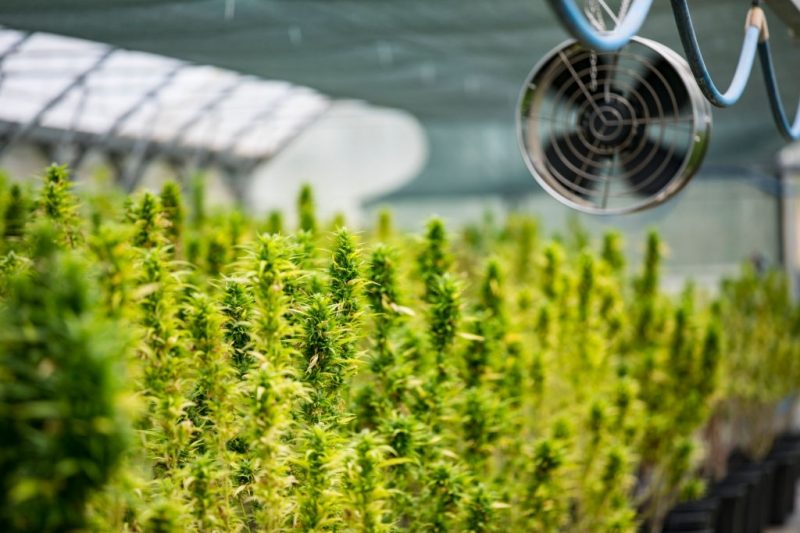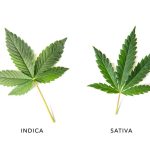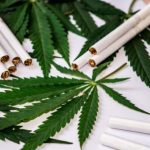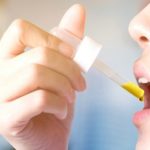🔥 Website for Sale - Contact Us
Temperature and humidity are the single biggest factor when it comes to cultivating quality flowers. Out of all the things new growers get wrong, climate control is the most unforgiving.
Although dehumidifiers are the most effective when it comes to climate control, knowing how to lower humidity in grow tent without dehumidifier can be a vital fallback plan when things go wrong.
While cannabis seeding plants thrive in high humidity levels of approximately 65-70%, this could spell disaster for plants that reach the vegetation stage in their life cycle.
Seeding and clones need a climate with more moisture levels because during this growth stage they have not yet developed a root system making them 100% reliant on their leaves to absorb daily nutrition and moisture.
Once these baby plants begin growing a strong root system they are ready to transition into the next phase of their life cycle.
During the vegetation, plants start relying more on the root system for moisture uptake and don’t need a hot humid atmosphere for support.
Although most cannabis strains are extremely adaptive, prolonged high humidity can destroy an entire crop without any visible warning sign.
Excessive air moisture in the grow room can cause all sorts of complications that ultimately affect flower yield and can even make the flowers poisonous to use.
Since the amount of moisture in the air is directly related to atmospheric temperature, there are many quick actions growers can take when applying the basic principle of relative humidity in a grow space.
Today we are looking at how to implement nature’s “relative humidity” law in a small grow space without a dehumidifier, and why it is important.
Why Lower Humidity In Your Grow Tent?
An excessive amount of humidity in a grow room is an indoor grower’s Achilles heel when it comes to harvest time.
High humidity levels can be responsible for multiple plant health complications and even be deadly to humans if inhaled or eaten.
1. Bud Formation of molds and mildew
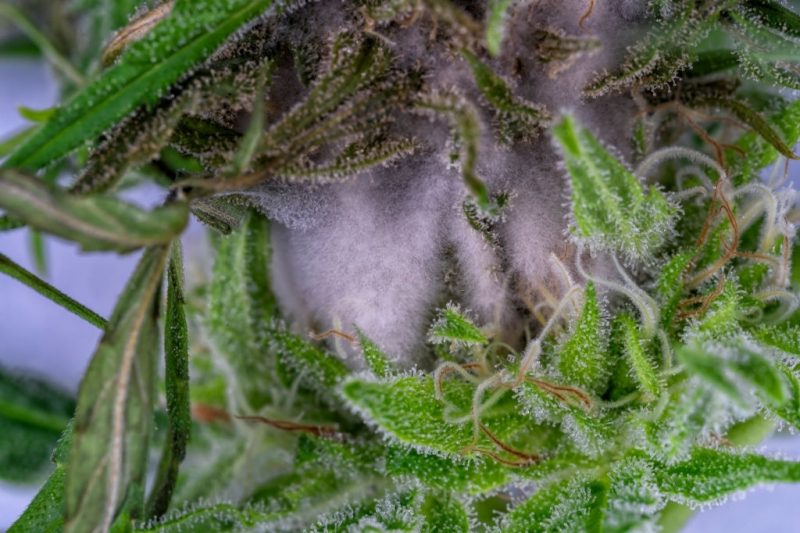
One of the most disappointing signs for any marijuana cultivator is the appearance of mold on the flowers.
Although identifying mold formation in its early stages can save the rest of the crop, this rarely happens because mold starts forming on the inside of the cannabis flowers and works its way towards the outside.
By the time growers spot mold growth is already too late and most likely results in a useless flower harvest.
The biggest problem with mold in a grow room is that while only one plant may have signs of mold, the entire batch can be infected.
The only way to truly know if the other plants are infected is by examining the inside buds of the plants in closest proximity.
If the plants close to ground zero do not show any sign of mold you might be in the clear, but highly unlikely.
What can I do once the mold is detected in a grow room?
Once the mold is found inside a grow room, the best possible action you can take is by immediately isolating the infected plant to prevent it from further spreading the mold.
Depending on the way the mold is formed, there might be a small chance that the mold is isolated to one plant which opens the possibility of damage control.
However, this can be a risky operation because mold and mildew can become air born when handling the plants and infect anyone in close proximately.
To prevent this from happening always are food-grade latex gloves and face masks to prevent inhaling the fungi.
2. Stunted plant growth
Another major cause for concern when it comes to high air moisture is that it hinders the plant’s ability to breathe.
Plants breathe through minute holes located in the leaves through a process called transpiration.
Transpiration is the process where plants expel water vapor and oxygen while simultaneously absorbing carbon dioxide through these tiny holes on the leaves called stomata.
Since plants release approximately 95% of all the absorbed water back into the air through transpiration. High air moisture triggers the plant to slow down this process which ultimately stunts plant growth.
While this doesn’t sound terrifying compared to bud rot and mold, it does have a huge impact on THC potency and the overall size of the buds come harvest time.
Why is the “relative humidity” principle important?
Once you understand the principle of relative humidity, you can predict how indoor climate behaves allowing you to control temperature and air moisture saturation more effectively by counteracting its effect in the grow room.
“Relative humidity” is the percentage of moisture saturation in the atmosphere compared the how much water the air can hold at a given time.
Nature’s “Relative humidity” law dictates that warmer air can hold much more moisture than a colder climate, which is why 70% humidity in the summer is much more damper than 70% on a cold winter’s day.
The evidence for the inconsistency of moisture in the air can be noticed when your skin slightly dry out during long winter months while the average relative humidity is high.
Using this humidity principle growers can easily manage a climate of a grow room with a variety of simple best practices that include temperature manipulation.
What is the optimal humidity level in a Grow Tent?
The complete life cycle of a cannabis plant exists out of 4 unique phases and each stage needs a different humidity level for optimal growth.
While there is slight elbow room to over or undershoot the optimal level without suffering any serious consequences, keeping within the ideal humidity level minimizes the risk to the crops.
The more the climate moves beyond the optimal range, the more likely disaster might strike.
Seedling Stage – 65-70% Humidity Level
During the seedling and clone development stage, cannabis feels most comfortable in a damp atmosphere because without a root system the plant needs to absorb all nutrients and water from the air through its leaves.
Vegetation Stage – 60-70% Humidity Level
During the vegetation stage, plants develop a robust root system that is more equipped to handle the rapid growth rate. To help the plant function to its optimal level, humidity should be lowered to allow the plant to breathe easier.
Early Flowering Stage – 40-50% Humidity Level
During the Early Flowering phase, a grow room humidity should never surpass 50% to prevent diseases like flower rot and molds formation.
Late Flowering Stage – 45-50% Humidity Level
When cannabis transitions into the final stage of its life cycle the ideal humidity needs is slightly higher than during the early flower stage to prevent buds from drying out and becoming brittle or harsh.
3 most effective ways to lower humidity in grow tent without dehumidifier

For small-scale cultivation setups lowering the humidity in a grow tent is best achieved with a combination of methods, usually, at zero dollar cost.
Here is my guide to help you decrease water moisture in a small grow space.
1. Increase ventilation in your grow tent
Boosting ventilation fan speed is the fastest way to reduce the relative humidity in a grow space with a switch of a button.
Increasing ventilation fab speed helps by sucking out water-saturated air which in return creates a vacuum inside the tents that automatically sucks in cooler dry air from the outside environment.
While the circulation of hot and cold is extremely effective in reducing relative humidity, the mounted fans inside the grow space create also contribute by drying out the moisture in the environment.
2. Lower pant density
Plants are most valued for their contribution to removing carbon dioxide from their environment and replacing it with oxygen.
However, during night time when plants stop converting sunlight into growth energy, they act much like humans in that they absorb oxygen and release carbon dioxide back into the environment.
The release of extra carbon dioxide in a grow room creates a warming effect similar to what we are experiencing with global warming.
The fastest way to combat plant carbon dioxide production is by trimming unnecessary branches and leaves.
Apart from slowing down carbon dioxide production, less plant density also help air to circulate more effectively in the grow space.
Always remember to trim your bush :).
3. Avoid unnecessary watering
Since plants discharge approximately 95% of absorbed water back into the atmosphere, overwatering plants is one of the biggest contributors to high humidity in a grow space.
Furthermore, soil that is over-saturated with water will discharge the overflow to the propagation trays which is basically open-source water that will constantly feed the moisture density in the air.

